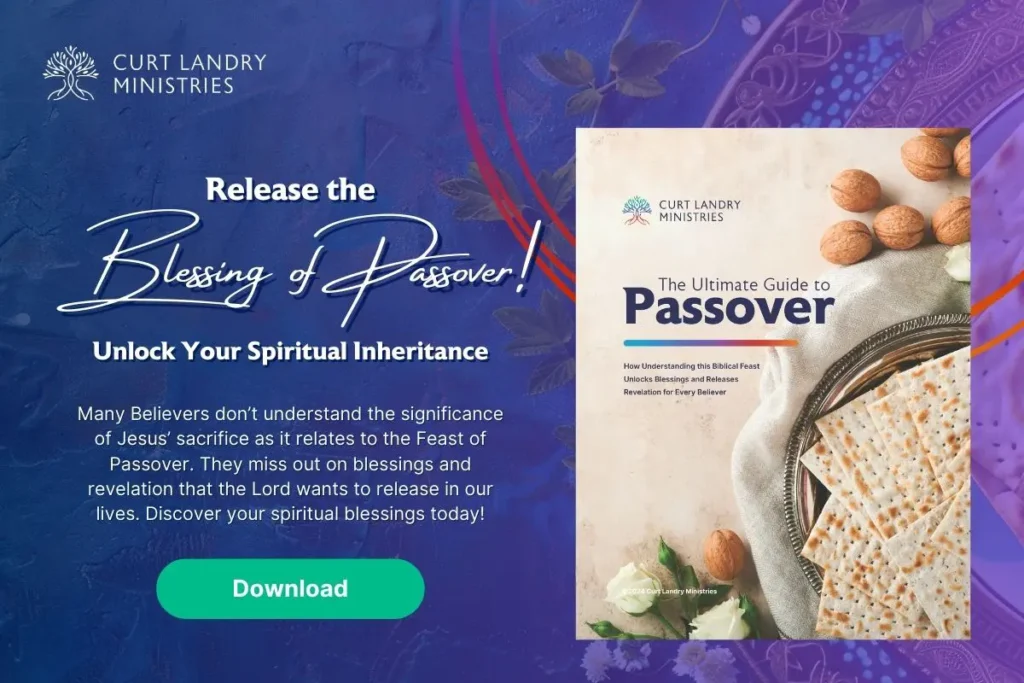The Significance of the Seder Plate
Did you know that the significance of the Seder plate is an important part of understanding the Passover celebration? Each element holds deep meaning, and for Believers, we can see Jesus in the details, from the lamb shank to the three pieces of matzah. Even how they are placed on the plate holds meaning.
This Passover, discover the significance of the Seder plate and your spiritual heritage. It’s time to come into the fullness of the Messiah!
What’s on the Seder Plate?
Depending upon the size of the Passover table, you can have at least one Seder plate. Each plate holds at least six ritual items, including the shank bone, karpas, charoset, maror, and an egg. This plate is often heavily decorated and displayed in a primary place within the home throughout the rest of the year.
Roasted lamb shank bone: A striking symbol of Passover is the roasted lamb shank bone, called the zeroah in Hebrew. The bone commemorates the lamb sacrifice on the evening the ancient Hebrews fled Egypt. Zeroah, meaning “arm,” refers to the arm of the Lord, as He stretched out His arm to save the Jewish people from slavery.
From a Messianic perspective, we see how God stretched out His arm through Yeshua Messiah, the Lamb of God, to bring salvation from spiritual slavery. As Isaiah 63:5 says, “Therefore My own arm brought salvation for Me…”
Roasted egg: The roasted egg, or the baytsah, stands in place of one of the traditional sacrificial offerings, which would have been performed in the days of the Second Temple. Many believe this also represents God’s people remaining unscathed in the heat of the fire.
Maror: Maror, known as the “bitter herb,” is a spicy root that brings tears to the eyes when eaten. This act refers to the bitterness the ancient Hebrews experienced while living in Egypt. It is also a time for modern-day Believers to reflect on bitter enslavements within themselves and our need for deliverance.
Charoset: The opposite of the maror, charoset is a sweet and chunky applesauce filled with apples, nuts, wine, and cinnamon. Charoset signifies the mortar placed between the bricks created by the Hebrews while in slavery and also reflects the goodness of God, who is faithful to remove the bitter roots from our lives.
Karpas: Karpas is a green vegetable and is typically replaced with Parsley at the contemporary table. A small vile of saltwater sits nearby, and the karpas is dipped into it several times throughout the meal. Dipping food was considered a luxury in ancient times. This act symbolizes new life as we walk out of slavery into the promised land.
Chazeret: The chazeret is a second bitter herb with the same meaning as the maror.
Salt Water: Although salt water symbolizes the sweat and tears experienced during slavery in Egypt, it also stands for purification and healing.
Matzah: Three pieces of matzah are also placed upon the Seder plate. This bread is made without leaven and does not rise like traditional bread. It would have been made hastily, allowing the Hebrew children to escape quickly. Leaven in bread enables the dough to rise and puff up and can be a symbol of pride and sin.
When Jesus broke bread at Passover, He was breaking matzah, bread without leaven. When He said the bread is His body, He was saying His body is sinless. His perfect, sinless sacrifice is the blood-covering that removes the leaven from the lives of those who come to Him for salvation!
Wine: Each individual attending the Seder is given a cup or glass from which they drink four cups of wine. Traditionally, these represent God’s four promises: “I will take you out…”, “I will save you…”, “I will redeem you…”, and “I will take you as a nation…”. They are powerful declarations of God’s eternal covenant with Israel and all those grafted in!

Elements You Need
- A Seder plate to hold at least 6 of the elements (juice/wine will be in a cup, link for Seder plates below)
- A kiddush cup to hold your juice/wine
- Matzah (3 pieces of bread or crackers without leaven)
- Horseradish (One teaspoon per person is ample)
- Charoset (Chunky applesauce with nuts and cinnamon, approximately 1 tablespoon per person)
- Parsley (Just enough for everyone to have a sprig)
- Saltwater (Enough for people to dip their parsley into)
- Grape Juice or Wine (Enough juice/wine for each person to have 4 sips)
- It is also traditional/symbolic of having a roasted lamb shank bone and a boiled egg on the table. If you don’t have an actual lamb shank, no worries! You can use a beef shank, a chicken bone, or something similar to represent the arm of God and Jesus’ sacrifice.

The Passover guide includes a graphic of the Seder plate, showing where to place the elements and what they symbolize.
You can watch our Passover 5785 seder service here. The appointed time of Passover is a powerful season, and we trust the Father will open the windows of Heaven, pouring out protection, strategy, and provision for His people. Join us and receive!